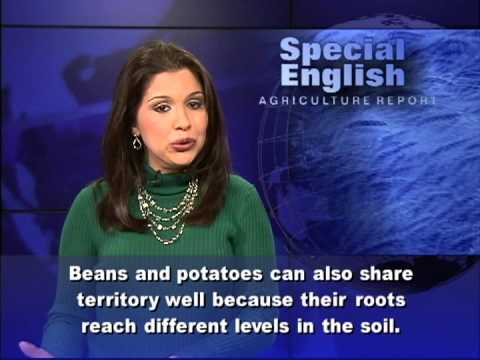From VOA Learning English, this is the Agriculture Report. Companion planting is the idea that some kinds of plants can help each other grow. Plants that are compatible generally need similar soil, nutrients and moisture levels. Advice about which plants are compatible is sometimes based more on tradition than fact. But experts say there is evidence to support certain combinations.
These can improve harvests, reduce disease and help control pests by attracting helpful insects. For example, some kinds of soil bacteria take nitrogen from the air and make it into a form that plants can use. The plants hold, or fix, the nitrogen in their roots. Legumes are especially good at nitrogen-fixing. Then any crops that share the same space as the legumes can get the nitrogen as the roots decompose.Beans and potatoes can also share territory well because their roots reach different levels in the soil. Deep-rooted vegetables get nutrients and moisture from lower down in the soil, so they do not compete with plants with shallower roots.
But some plants placed together can harm each other's development. For example, tomatoes do not like wet soil, but watercress does, so you would probably want to keep them separated. Some kinds of produce should be kept apart even after being harvested. This is because of ethylene gas. Ethylene is a plant hormone that can cause some kinds of produce to ripen too quickly. This risk of ripening too soon is why markets often separate high ethylene-producing foods from those that are sensitive to the gas. But if you put an apple in a bag with a green banana, the ethylene from the apple will make the banana ripen sooner. For VOA Learning English, I'm Alex Villarreal. (Adapted from a radio program broadcast 05Mar2013)

원문출처 : http://www.youtube.com/watch?v=g4fr4A2BWuE&feature=youtube_gdata





 English
English 한국어
한국어
